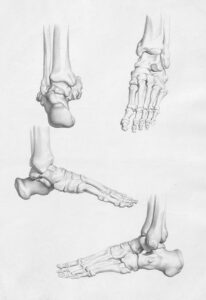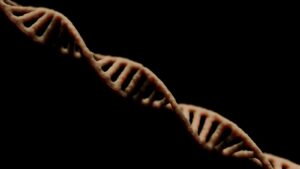The idea of humans regenerating lost body parts has intrigued scientists, medical professionals, and the general public for centuries. While some animals, like salamanders, starfish, and certain lizards, can regrow lost limbs and body parts, humans have much more limited regenerative abilities. For example, while human skin and liver cells can regenerate, we cannot regrow entire organs or limbs. However, recent advances in regenerative medicine, cellular biology, and genetics suggest that human regeneration may one day be within reach.
In this article, we’ll explore the science behind regeneration, examining why some animals can regrow body parts while humans cannot, the biological mechanisms involved, and the latest advancements in regenerative medicine that could one day enable humans to regenerate complex tissues and organs.
The Biology of Regeneration
Regeneration is the process by which organisms repair, replace, or regrow damaged tissues, cells, or entire body parts. In nature, some animals have remarkable regenerative abilities. For instance, salamanders can regrow entire limbs, tails, and even parts of their hearts. Similarly, starfish can regenerate lost arms, and certain lizards can regrow their tails. In these animals, regeneration is driven by specialized biological mechanisms that humans lack.
The key to these animals’ regenerative abilities lies in specialized cells called pluripotent cells, which have the capacity to transform into any type of cell needed for regrowth. When animals like salamanders or starfish lose a body part, pluripotent cells are mobilized to the injury site, where they differentiate into the necessary tissues, including muscles, bones, and nerves. Additionally, these animals often have highly active Wnt signaling pathways that regulate cell growth and differentiation, guiding cells to regenerate the lost structure. While humans have some version of these pathways, they are not as active or robust, limiting our regenerative capabilities.
Evolutionary Trade-offs: Why Humans Don’t Regenerate Like Salamanders
The lack of human regenerative ability can be partially explained by evolutionary trade-offs. Unlike many regenerative animals, humans evolved complex immune systems and wound-healing responses that prioritize rapid healing and scar formation over regeneration. This adaptation likely provided an evolutionary advantage, as rapid healing and scar formation protected against infections and other threats, especially in dangerous environments.
Over time, mammals—including humans—evolved mechanisms for rapid wound closure rather than regeneration. Scar tissue formation prevents open wounds from remaining exposed to bacteria and pathogens, offering a quicker path to recovery. However, this process comes at a cost, as scar tissue lacks the complex cellular architecture of the original tissue and often results in lost functionality. This evolutionary trade-off enabled fast healing but limited our ability to regenerate complex structures.
Limited Regenerative Abilities in Humans
Although humans cannot regenerate entire limbs or organs, we do possess limited regenerative abilities. Skin and blood cells, for instance, constantly renew themselves. Liver cells can regenerate following injury or partial removal, allowing the liver to regrow up to 70% of its mass within weeks. Additionally, young children have some capacity to regenerate fingertips if the injury is minor.
This limited regenerative capacity is largely due to the presence of adult stem cells in certain tissues. Unlike pluripotent stem cells, adult stem cells are multipotent, meaning they can differentiate into a limited number of cell types. In the liver, for example, adult stem cells can multiply to replace damaged tissue, but they are restricted to forming liver cells and cannot generate complex structures like limbs.
Advances in Regenerative Medicine
Regenerative medicine aims to overcome the limitations of human healing through therapies and technologies that encourage tissue regeneration. Scientists are exploring several approaches, including stem cell therapy, tissue engineering, and gene editing, all of which hold the potential to unlock human regenerative abilities.
Stem Cell Therapy
Stem cell therapy is at the forefront of regenerative medicine. Stem cells are unique in their ability to differentiate into multiple types of cells, offering the potential to repair or replace damaged tissues. Two types of stem cells are especially relevant to regenerative medicine: pluripotent stem cells and induced pluripotent stem cells (iPSCs). Pluripotent stem cells can develop into any cell type, while iPSCs are adult cells reprogrammed to behave like embryonic stem cells.
Researchers are working to direct stem cells to differentiate into specific cell types that can replace damaged tissues. For instance, stem cells have shown promise in regenerating heart tissue after a heart attack and repairing cartilage in damaged joints. However, directing stem cells to regenerate complex structures, such as fingers or limbs, remains challenging due to the complexity of these structures.
Tissue Engineering
Tissue engineering involves creating scaffolds that mimic the structure of tissues and organs, which are then seeded with cells to promote tissue growth. This technique has shown success in creating simpler structures, like skin grafts and bladders, for medical use. For more complex structures, researchers use 3D bioprinting to create scaffolds that precisely replicate the architecture of tissues, including blood vessels.
While tissue engineering holds potential, building complex organs like kidneys or lungs, or regrowing limbs, presents additional challenges due to the intricate network of blood vessels and the variety of cell types required. Research in tissue engineering continues to advance, but functional, bioengineered organs are still years away from clinical application.
Gene Editing
Gene editing technologies, particularly CRISPR-Cas9, offer a new approach to enhancing regenerative abilities by activating dormant genes or pathways associated with regeneration. Some researchers are experimenting with activating the Wnt signaling pathway in human cells to stimulate regeneration. Although preliminary, this research suggests that gene editing could one day be used to “unlock” regenerative pathways that could potentially lead to regrowth of tissues or limbs.
Gene editing presents both exciting possibilities and ethical challenges. While it may hold the key to unlocking human regenerative capabilities, editing genes also carries the risk of unintended consequences, such as tumor growth or disruption of essential cellular functions.
The Challenges and Future Directions of Human Regeneration
Despite the promising advances in regenerative medicine, several challenges remain before humans can achieve large-scale regeneration of body parts. One of the main challenges is complex tissue organization. In animals with regenerative abilities, cellular signals precisely guide the arrangement of cells, tissue layers, and blood vessels. Replicating this level of complexity in humans has proven to be extraordinarily difficult.
Another significant challenge is nerve regeneration. For a limb to function properly, it must not only have muscles and bones but also a network of nerves to control movement and sensation. While scientists have made strides in regenerating nerves, the precise alignment required for functional recovery is still a major obstacle.
Furthermore, the immune response poses a hurdle in regenerative medicine. In humans, the immune system often responds to injuries by forming scar tissue, which impedes full regeneration. Researchers are exploring ways to modify the immune response to reduce scarring and promote tissue regrowth, but striking the right balance remains challenging.
Potential Breakthroughs on the Horizon
While full limb regeneration may still be a distant goal, research in regenerative medicine is progressing rapidly, and recent breakthroughs offer hope. 3D bioprinting, bioengineered scaffolds, and genetic therapies are all showing promise in treating injuries and regenerating tissues. Additionally, the discovery of new cell types and signaling pathways is expanding our understanding of regeneration, moving us closer to clinical applications.
One promising area of research involves using organoids, or mini-organs grown in a lab, to study tissue regeneration in a controlled environment. Organoids allow scientists to test regenerative treatments and better understand how cells interact to form complex tissues, providing a platform for breakthroughs in regenerative techniques.
The Future of Regenerative Medicine
The ultimate goal of regenerative medicine is to enable the regeneration of complex body parts, including limbs and organs, that can restore full functionality to individuals affected by injuries or diseases. While this goal remains aspirational, current research is laying the groundwork for what could one day be a reality. Advances in stem cell research, tissue engineering, and genetic editing continue to push the boundaries of what is possible, bringing us closer to the possibility of human regeneration.
Conclusion: The Possibility of Human Regeneration
While humans currently lack the ability to regrow lost limbs and organs, research in regenerative medicine offers promising avenues for the future. Advances in stem cell therapy, tissue engineering, and gene editing are providing scientists with the tools to explore new treatments that could one day unlock human regenerative capabilities. Although full regeneration may take decades to achieve, the progress made so far offers hope that humans may eventually overcome the biological limitations preventing us from regrowing complex structures.
As science continues to progress, the possibility of human regeneration is moving from science fiction toward the realm of scientific possibility. With each discovery, regenerative medicine brings us closer to a future where people who lose body parts can regain function and live fuller lives. While we may still be far from regrowing limbs, the journey toward human regeneration has begun, and its potential implications are transformative for medicine and society.




